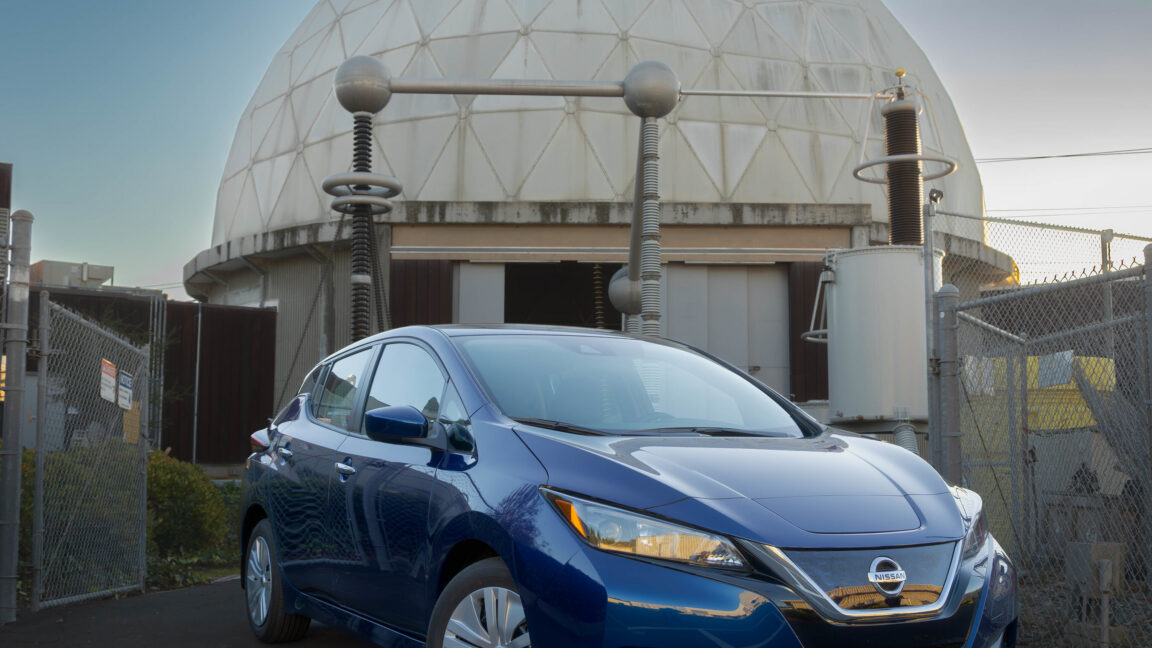
Not everything about the future is worthless. Like electric cars. Sure, there’s one thing dinosaur-burners do better – make fewer refueling stops – but even the least efficient EV is still several times better than its gas counterpart. In fact it is so good that it offsets all the extra energy required to make the battery within a year or two. They are quiet and easy to operate. And in a pinch, they can power your home from the garage. Or how about the airport?
Well, we’re not talking about a major international airport (although I really need to talk to someone at Dulles International Airport about their idea of electrifying those Space 1999-esque mobile lounges). But in Humboldt County, California, there’s a microgrid at Redwood Coast Airport that has now integrated bidirectional charging and a pair of Nissan Leaf EVs into its operation.
The microgrid has been operational since 2021 with a 2.2 MW solar array, 8.9 MW of battery storage and a 300 kW net-meter solar system. It can draw power from and send excess power back to PG&E’s local grid, but in the event of a power outage, the microgrid can keep the airport up and running.
turning an old leaf
One of the Leafs (from model year 2021) was purchased by the Humboldt County Aviation Division, the other is model year 2020, provided by Nissan. These are the previous generations of Leaf that we tested recently, and they still rely on CHAdeMO for DC fast charging. But the second-generation Leaf was always vehicle-to-grid capable; It’s just that no one in North America has hired a pilot to do this, at least to my knowledge. We’ve seen school buses and the F-150 get into the V2G game, and it’s good to see that the second-generation Leaf is now finally meeting that capability in North America, even if it has just been replaced with a better model.
